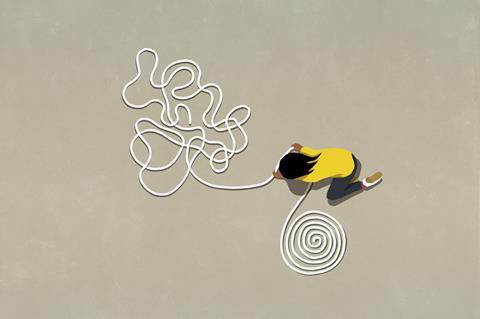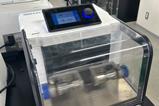Six tips for solving problems in the lab

Everyone has had that frustrating experience of a routine experiment failing to work as planned. Troubleshooting is at the heart of every successful research project, but it is an often-overlooked and uncredited part of the process. ‘It’s detective work, getting to the bottom of what happened in an experiment,’ says Alison Frontier, an organic chemist at the University of Rochester in the US and curator of the practical chemistry website Not Voodoo. ‘If it didn’t work, why didn’t it work? And if you can figure that out, then you can correct it.’
Here the experts offer a few suggestions on how you can start to solve the mystery of what went wrong.
Repeat the experiment
Troubleshooting can be both time-consuming and exasperating so the first step should always be to establish whether it is really necessary, says Brianna Bibel, a biochemist at St Mary’s College of California, US. ‘Often a failed experiment is just a weird fluke or a random human error and you’ll never figure out what it was,’ she explains. ‘My first piece of advice is to just try your experiment again and if it doesn’t work a second time, then go and troubleshoot.’ Planning your experimental procedure ahead of time can help to minimise human errors but everyone makes mistakes sometimes. Identifying these early on can save a lot of time later.
Be aware of what should be happening
‘It’s always important to know what you’re doing and why you’re doing it, then if something goes wrong, you already know the potential problem points,’ says Bibel. Understanding what should be happening in the flask provides a vital point of comparison and enables you to rationalise how the experiment could have gone wrong. Often, the type of problematic result will reveal a lot about where and why the error occurred, making the issue far easier to identify and correct.
According to Frontier, inadvertent exposure and contamination during reaction work-up and purification is one of the most common mistakes organic chemistry students make. ‘Silica, water and deuterated chloroform can all destroy sensitive products,’ she says. ‘Understanding the nature of your compounds and how they will behave during the reaction or work-up analysis is crucial to avoid losing or decomposing the product.’
Monitor your experiment
Hand in hand with this awareness comes monitoring. Most experiments have multiple stages, each providing another opportunity for an error to occur, so Frontier suggests consistent analytical monitoring. ‘Especially when you’re doing something for the first time, don’t just follow the procedure but watch it throughout,’ she says. ‘If you know you had your product before the work-up but then didn’t have it after, you know exactly where the problem is.’ Visual cues such as colour changes, precipitation or temperature increases can also provide an immediate hint that something isn’t quite right. Frontier recommends noting down any experimental observations alongside the procedure.
Run control experiments
‘When troubleshooting, you want to collect as much evidence as you can and part of this is knowing what you could test that will help you identify the problem,’ says Bibel. Controls – experiments in which all variables are kept constant to act as a point of comparison – are particularly useful for identifying systematic or equipment errors. ‘You want to have a positive and a negative control whenever possible,’ explains Bibel. ‘A positive control should give you a known readout so it’s checking you will detect any positive results. A negative control shouldn’t give you any readout so it’s testing for false positives.’
Understand all your variables
In many cases, factors outside of those consciously being controlled can lead to anomalous results. ‘Everything from the solvent source to the ambient conditions surrounding the reaction – light, pressure, air, reaction apparatus – should be evaluated,’ says Frontier. If the problem persists it may be necessary to begin eliminating these environmental variables. ‘You’re sampling the space around that experiment in all directions and any of the things that touched or interacted with that experiment at any time could be a problem,’ explains Frontier.
Know when to stop
Sometimes, despite your best efforts, you might never be able to get a particular experiment to work – and that’s OK. It’s important to recognise when to draw the line and move on to an alternative approach. ‘The real question is, is troubleshooting worth it? Do you have the time and energy and resources in order to pursue it?’ says Bibel. It can be a difficult decision to drop a particular line of enquiry and Bibel suggests talking to other researchers to get an external perspective on your problem. ‘Your labmates are a great source of help when it comes to troubleshooting. Having those discussions in a supportive lab environment can be really valuable and help you decide whether something is worth pursuing,’ she says.

















No comments yet